Mole on the site: benefit or harm, how to scare away?
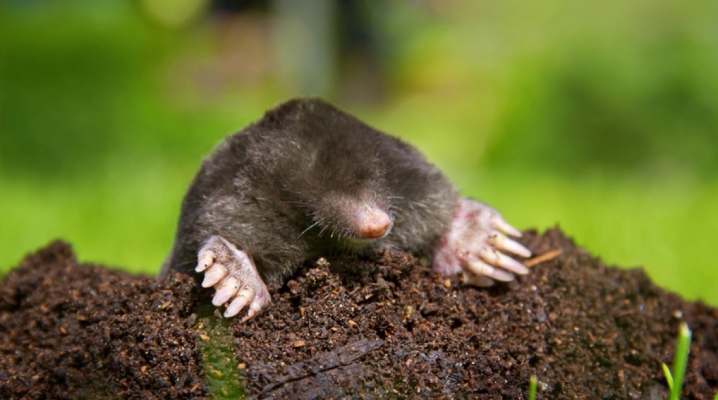
If moles are bred in the summer cottage, you should not ignore their appearance. Individuals settle in colonies and multiply quickly, therefore, having caught 1-2 animals, you should not calm down on this. Otherwise, they can ruin the crop on the site. You should not destroy moles, there are many more humane ways of fighting. We will tell you who these diggers are, how to drive them away from the site and what to do to prevent them from settling in the garden again.
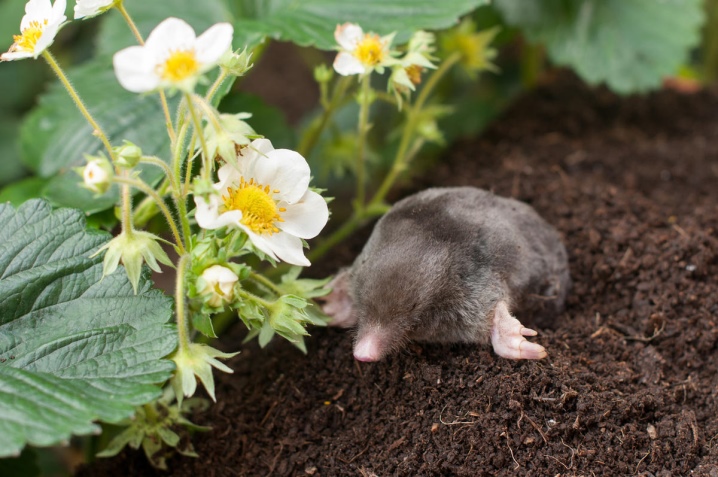
Who is a mole and how is it different from a mole rat?
Gardeners and gardeners often confuse these two animals. Both the mole and the mole rat, in search of food, break through tunnels underground, throwing part of the soil to the surface. One animal can dig a path up to 350 meters long. The similarity of these animals is reduced vision. Most of them have very small eyes that cannot be seen under the fur. In some species, the organs of vision are completely tightened with a skin fold.
The difference between moles and mole rats is significant. First, they belong to different types of animals. Moles are insectivorous mammals. The body length of adults ranges from 15 to 20 cm, and the weight rarely exceeds 130 grams. Thanks to the streamlined body shape, animals move easily and quickly through narrow passages under the ground.
Moles are constantly in search of food: because of the constant movement, they consume a lot of energy, the reserves of which must be replenished in a timely manner.
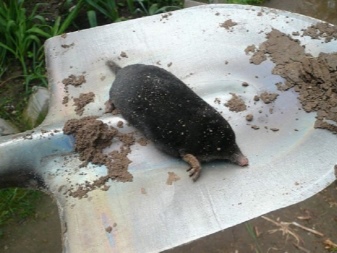

These animals feed on:
- earthworms;
- larvae of beetles, various beetles;
- caterpillars and other insects.
Moles can come to the garden only under the condition of high humidity and soil fertility. They make underground tunnels with powerful front paws, which have massive claws. They dig the ground at a depth of 20-25 meters. Their passages look underground like labyrinths with intricate ramifications that can stretch for several kilometers.
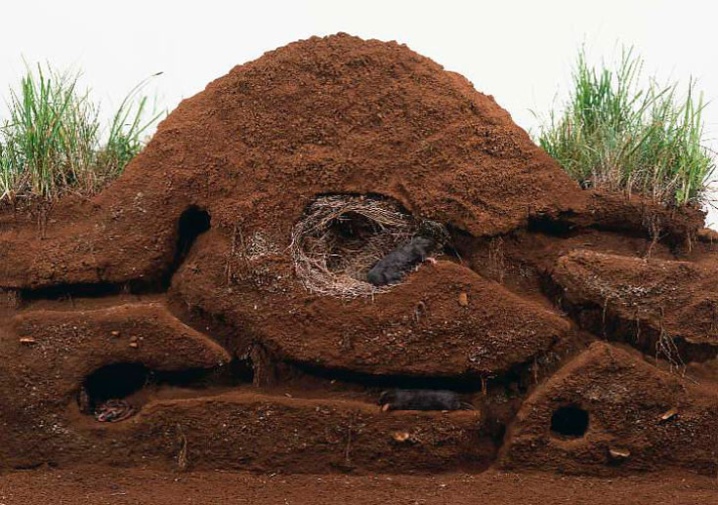
Mole rats are rodents that feed on plant foods. Outwardly, they are much larger than moles - their body length can reach 30-35 cm. They feed on tubers, bulbs, root crops planted in their personal plot. The mole rat can live in forests, lowlands and ravines: there it feeds on wormwood, acorns, saplings of oaks, maples, and actively eats rhizomes of various plants.
The mole differs from shrews, since a shrew is a small mouse with an elongated nose, rather, resembling a proboscis. Settling in the garden, shrews are able to destroy the entire crop. Moles are not interested in plant crops.

Benefit or harm?
Moles can not only harm the gardener, but also benefit. For example, they actively eat the bear - the fierce enemies of gardeners. They can significantly reduce the population of various beetles, wireworms, cabbage caterpillars and other pests on your site, which can cause great damage to the crop. These mammals also kill rats and mice. Thanks to their keen sense of smell, they quickly find rodent nests and are able to destroy the brood at a time. Another benefit is to aerate the soil when digging underground passages: the loosened soil is well saturated with moisture and is highly breathable, which is beneficial for the root system of all crops.
However, whole colonies of moles in the garden are dangerous to plants. The harm from moles on a personal plot is much more than good.1-2 individuals will not cause serious damage to the crop, but these predators do not remain alone for long. Where there is a female and a male, a brood of mole will soon appear. It is very difficult to find moles with calves, it is almost impossible in areas with a large area. Some gardeners flood the passages with water, but such measures are useless, since the family, in case of danger, will quickly find a dead end that is safe for itself.
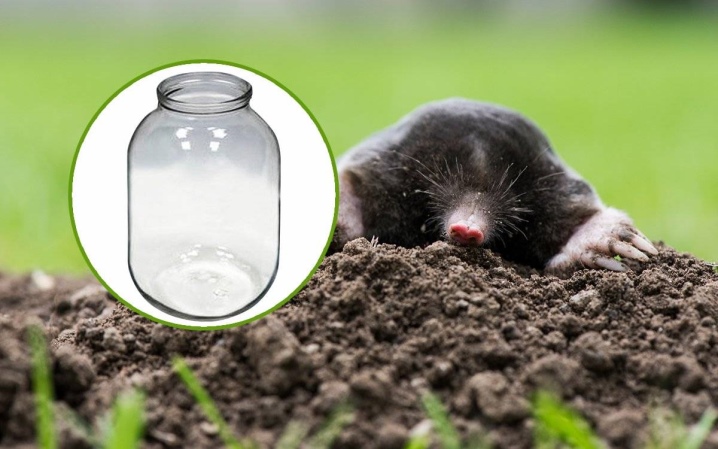
Here are some of the consequences of the moles settling in the garden.
- In search of food for a day, a female with a male and a grown brood is able to turn up to 5 acres of land on the site. As a result, the well-groomed area loses its aesthetics due to the appearance of numerous passages and heaps of soil.
- One adult mole is capable of digging tunnels with a total length of 15-20 m and even more per day. Making moves, the animals damage various obstacles that occur on the way: rhizomes of trees and shrubs, wires, sewer systems, plastic water pipes. Damaged roots of plants planted in the garden dry quickly, they cease to feed the plantings. As a result, plant crops can get sick (with minor trauma to the root system) or even die.
- Moles are capable of destroying almost all earthworms on the site. This can harm the gardener: the fact is that the worms eat nematodes - microscopic worms that infect the rhizomes of the plantings on the site. Due to the lack of "raincoats", the nematode will actively develop, the soil will become scarce, and the plants may soon die.
- In the process of digging tunnels, predators mix the infertile lower soil layer with the surface nutrient layer. Because of this, the soil becomes scarce, the plants may receive less of a lot of different fertilizers.
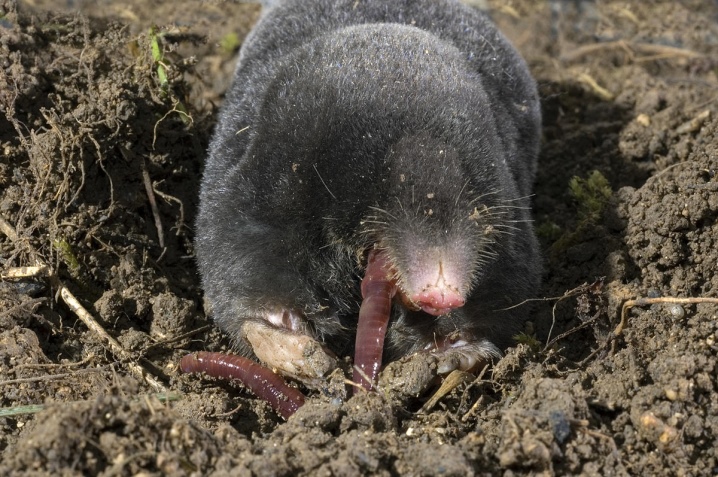
Reasons for the appearance
To develop, survive and reproduce, moles must constantly feed on: per day, adults can eat insects and small rodents 1.5 times their own weight. They find this amount of food on fertile and well-groomed soils in vegetable gardens and in personal plots. When stocks are depleted, they have to migrate, look for new places with an abundance of caterpillars, earthworms and beetles.
The most favorable soil for moles is well-groomed, saturated with useful substances, moderately moist. Because of this feature, predators often settle on plantations inhabited by humans.
Another reason for the appearance of animals is the search for protection. In nature, they can be attacked by various predators, and domestic animals do not pose a direct threat to them.
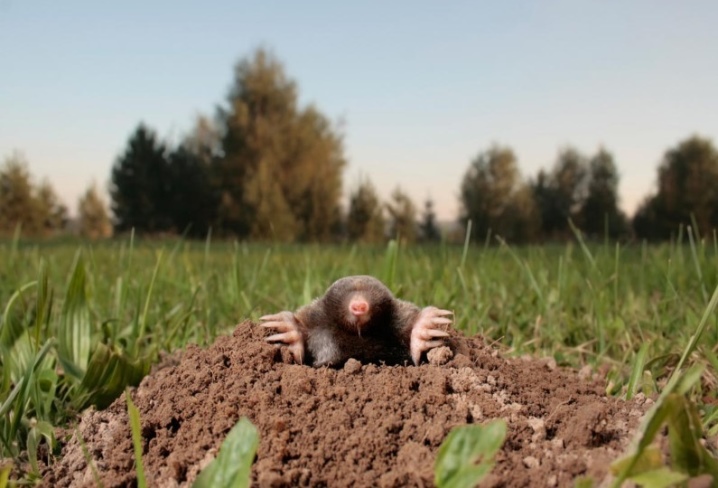
How to scare away?
There are several ways to get moles to leave your garden plot. One of the most effective ways is the use of different repellents.
In the garden, you can use plants against moles. Some vegetable and flower crops are capable of scaring off intruders. The smell of onions and garlic scares them away, so you can make beds around the perimeter of the site for planting these crops. An unpleasant smell for moles is also inherent in marigolds, daffodils, castor oil plants. However, such protection is temporary - when harvesting odorous plants, the "entrance" to the summer cottage will be open. In addition, some individuals push these crops out of the ground or bypass them a little deeper than the location of the root system.


Moles do not like strong unpleasant odors, so fish, eggs, finely chopped onions and garlic can be spread over the area. You can take different essential oils, soak pieces of cotton wool or cloth with them and put them in the passages. After that, the holes need to be sprinkled with soil and tamped well. Some gardeners mix odorous ingredients into the dough, from which they form balls and bury them around the entire perimeter of the site (the depth should be about 10 cm, and the distance between the balls should not be more than 1 meter).
Moles are afraid of different sounds, which was also adopted by experienced gardeners and gardeners. They recommend installing do-it-yourself sound scarers.For example, you can take several alarm clocks, start them at different times and put them in a jar with a lid on. Such scarers need to be buried in the garden in different places to a depth of 0.5 m.
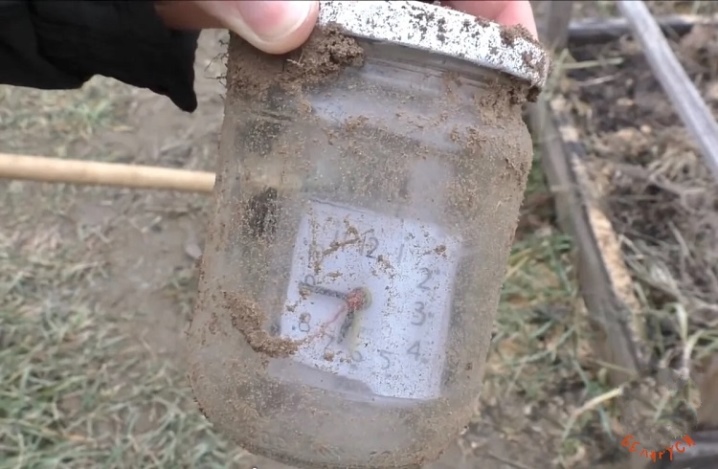
You can scare off moles with the help of hollow metal tubes: they need to be stuck into holes so that about 50 cm of the tube remains on the surface of the earth. When the wind blows, such pipes will emit a hum that will drive the animals away. You can make turntables yourself from tin or plastic cans, turn on the radio or come up with other sound scarers.
More modern means of protection against moles include ultrasonic repellents. They are placed in the ground. Switched on devices emit sound waves that are inaudible to humans, but unpleasant for small predators. Ultrasonic devices irritate moles, and they tend to get away from the source of unpleasant noise as far as possible.
Repellers can be powered by solar batteries or an internal rechargeable power source.
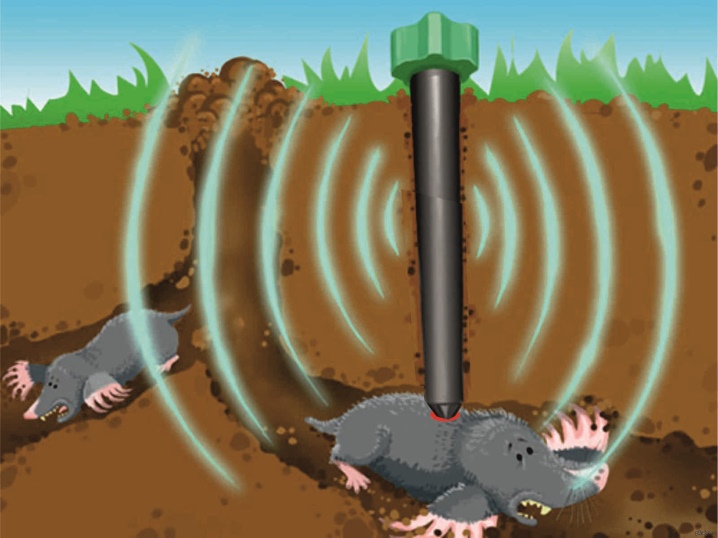
Combined options are also on sale. The following models are used to scare off moles:
- Help 80410;
- "Masterkit Antikrot";
- Rexant R30;
- "Antikrot Dadzhet";
- Sititek and other devices.
When choosing a device, you need to take into account its power and range. If the area is large, it is recommended to purchase several devices.
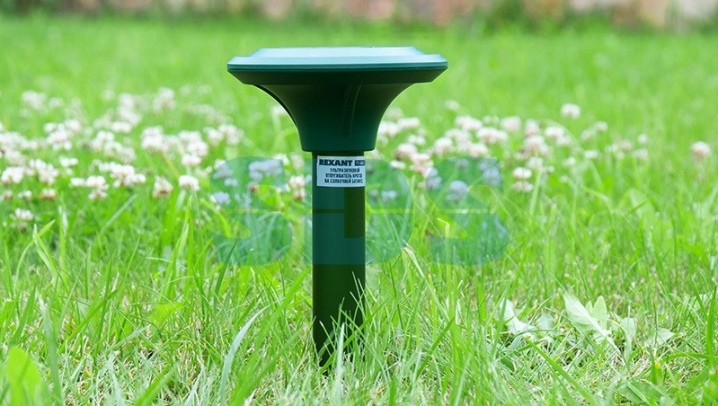
Prevention measures
To prevent moles from settling in the garden, you need to listen to the advice of experienced gardeners and protect the site on your own. It is important to take a responsible approach to preventive measures if work is planned ahead to improve soil fertility:
- construction of a compost heap;
- preparation of a manure pit;
- mulching with cut grass.
Such organic fertilizers are loved by earthworms, which moles love to eat.
To stop predators and prevent them from entering the site, it is recommended to fence off its perimeter with a special protective barrier. The most optimal material is a fine mesh metal mesh, which can be purchased at most hardware stores.

It must be dug into the ground to a depth of 50-60 cm, and the fence should protrude about 40-50 cm above the ground (because in exceptional cases, moles can go to the ground to overcome a deepened obstacle). As a fence, you can use slate sheets, thick linoleum or other materials, the main thing is that they are strong and can withstand the powerful claws of moles.
If such protection has been thought out on the land plot, but moles are still wound up, you should immediately start scaring them away to minimize damage from their activities. For the best result, it is recommended to use several types of repellents at once, for example, ultrasonic and aromatic ones. You can also attract a cat - moles can sense a domestic predator and leave the garden.














The comment was sent successfully.